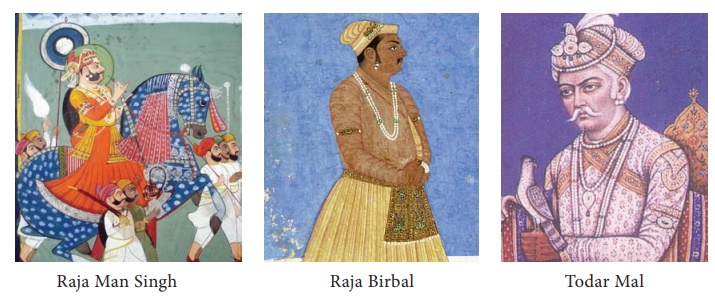The Mughal Empire - Mughal Society | 11th History : Chapter 14 : The Mughal Empire
Chapter: 11th History : Chapter 14 : The Mughal Empire
Mughal Society
Mughal Society
The population of India is estimated to have been
around 15 crores in the 16th century and 20 crores in the 18th century. Large
areas of land were under forest cover and the area under cultivation would have
been much less. As agriculture was the prime occupation of the society the
village community was the chief institution of social organisation. Though the
nature, composition and governance of village differed from place to place
there were certain similarities in the village administration. The Muqaddam,
privileged headman of the village, formed the Panch (Panchayat), an administrative
organ of the village. The Panch was responsible for collection and maintenance
of accounts at the village level. The Panch allotted the unoccupied lands of
the village to artisans, menials and servants for their service to the village.
The middle class consisted of small Mansabdars,
petty shopkeepers, hakims (doctors), musicians, artists, petty officials of
Mughal administration. There was a salaried class, and received grants called
Madad-i-Mash from the Mughal emperor, local rulers and zamindars. This section
often became part of the rural gentry and a link between the village and the
town. Delhi, Agra, Fatehpur Sikri, Lahore, Ahmadabad, Dacca and Multan were
important cities of the empire which could be ranked along with contemporary
European cities like London and Paris.

The inequality in the standard of life amongst the
privileged and the underprivileged classes was clear. Among the lower strata of
society, the men wore just a langota and the women a sari. Footwear was not
common. The poor lived in houses made of mud and their diet consisted of wheat
chapatis with pulses and vegetables. On the contrary the Mughal privileged
class consisting of zamindars and nobles led an ostentatious life. The nobles
were Mansabdars who received jagirs or land grants as payment according to
their ranks. The jagirdars were exploitative and oppressive in nature. The
nobles maintained a large train of servants, large stables of horses,
elephants, etc. The nobles lived in fine houses containing gardens with fruit
trees and running water. They wore the finest of clothing.
The Zamindars, members of dominant clans and castes
with armed retainers, were a dominant class with privilege over lands of the
peasants. Abul Fazal in his Ain-i- Akbari enlists the castes that were entitled
to be zamindars. While mostly upper caste Hindus and Rajputs were zamindars, in
certain localities Muslim zamindars existed. The zamindars had the right to
evict the peasants, in default of payment of rent.
In Mughal social structure, the nobles came mostly
from Central Asia and Iran. Afghans, Indian Muslims (shaikhzadas), Rajputs and
Marathas also obtained the status of nobility. It is estimated that during the
reign of Akbar over 15% of the nobility consisted of Rajputs. Raja Man Singh,
Raja Todar Mal and Raja Birbal were Rajput nobles of repute during Akbar. The
Rajputs appointed Kayasths and Khatris for various positions in government
administration. Jahangir, Shah Jahan and Aurangzeb employed Marathas in their
nobility. For example, Shaji, father of Shivaji, served Shah Jahan for some
time.
There were continuous migrations from Central Asia
as there were better career prospects in India. These migrations led to the
enrichment of culture through assimilation of diversity. Though the nobility
was divided on ethnic lines they formed a composite class promoting a syncretic
culture by patronising painters, musicians and singers of both Persian and
Indian origin.
The caste system was a dominant institution in the
society. Castes at lower levels were subject to much repression. Despite the
popular Bhakti movement raising the banner of revolt against discrimination,
the deprived and disadvantaged classes, who were landless peasants, were
subject to forced labour.
The Hindu women had only limited right of
inheritance. Widow remarriage was not permitted among upper caste women. Along
with household activities the women were involved in spinning yarn and helped
in agricultural operations. Mughal administration discouraged the practise of
sati that was prevalent among communities of the higher caste. Muslim brides
were entitled to receive mehr (money
mandatorily paid by the groom) at the time of marriage, and also had the right
to inherit property, though it was not equal to the share of the male members
of the family.
Related Topics